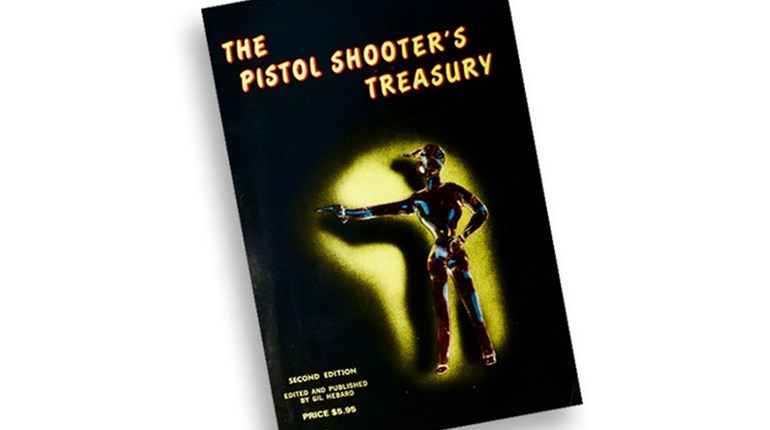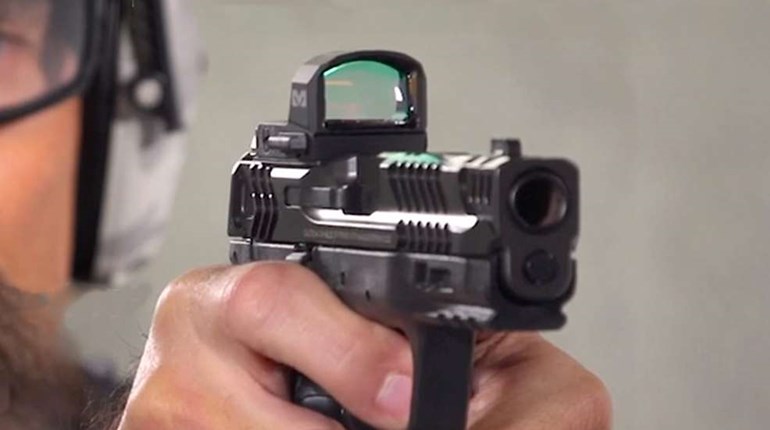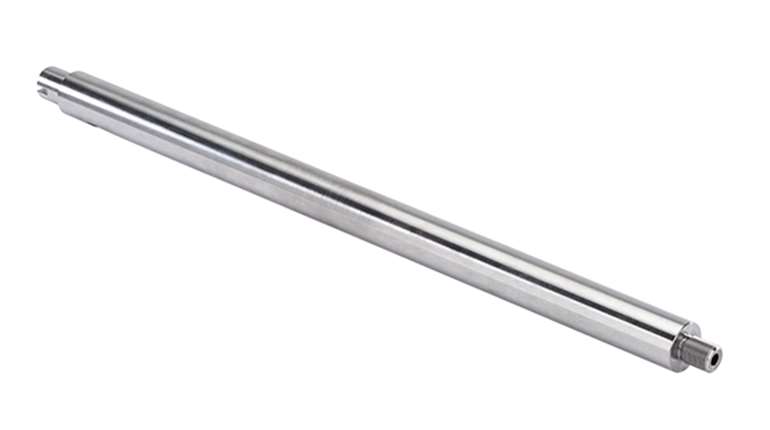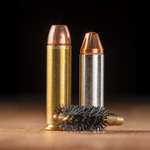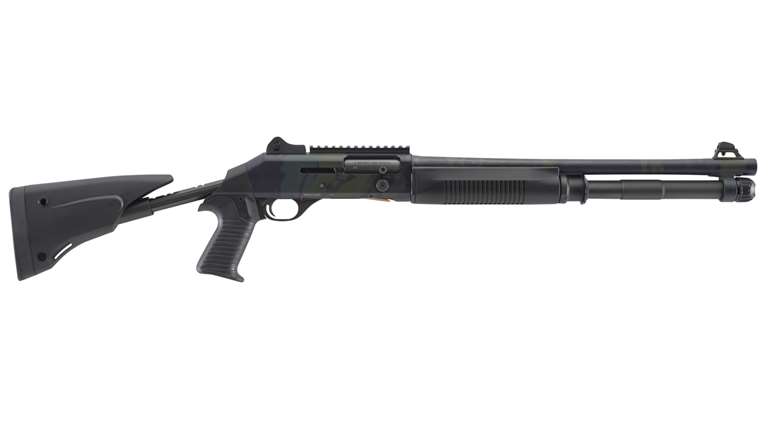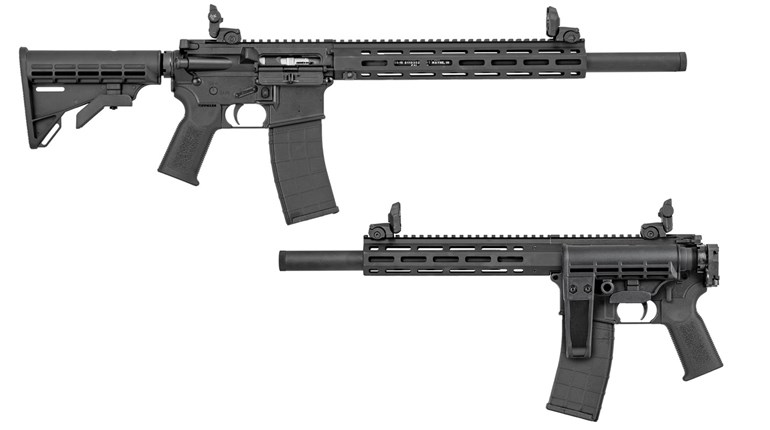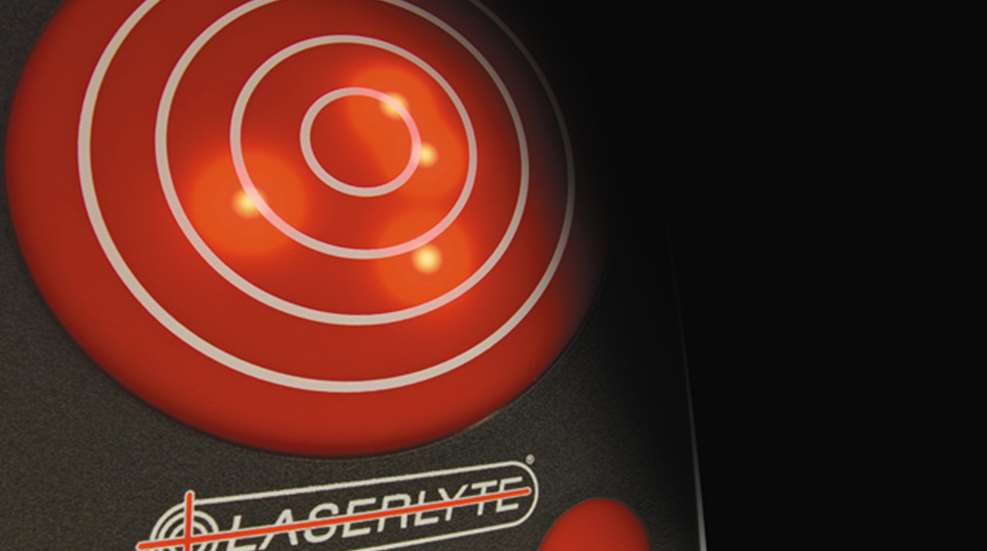
Shooting is part of my job. I shoot some sort of firearm almost every day. On days I don't, I dry-fire because it helps me stay sharp. I believe dry-fire practice is a good tool to help learn basic skills, maintain them and in some cases develop advanced skills. But dry-fire practice stinks. There's no bang, no recoil and there's no hole in the target.
Still, ask any professional shooter, and I bet they'll tell you that despite being boring, dry-fire practice is part of their routine. It's like a long, expensive date with no kiss at the end. With dry-firing, you only get the perception of what the sights were doing when the hammer fell. It can be good practice, but because of minimal eye and finger feedback, better shooters—those who know what it feels and looks like when they do things right—generally get more from the exercise.
However, incorporating a constant-on laser is a way to get more feedback, because you can watch your handgun's orientation in relation to point of aim throughout trigger manipulation. Laser/dry-fire training like this can be accomplished with any laser sight, including Crimson Trace Lasergrips. But, according to some instructors, it's not intelligent training. They contend you end up watching the laser instead of the sights. I believe laser trainers are valuable, especially for new shooters, because they teach how trigger pull can impact handgun movement.
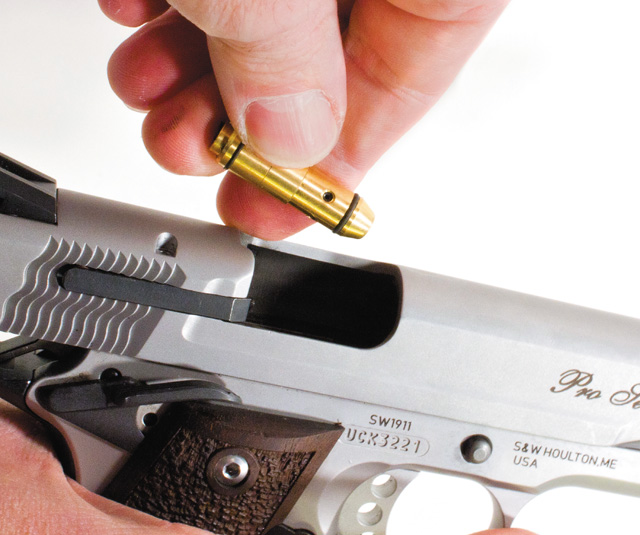
For advanced shooters there may be a point to the "watch the sights, not the laser" concept, but I still find myself occasionally using a laser to work on trigger pull. A way around this issue is to adjust your laser soit cannot be seen when you look over the sights. If you do this, you'll need a buddy to watch the laser and provide feedback.
Laser training devices that flash when the hammer falls are an alternative. They fit inside the barrel. Even though you can see the laser flash with your peripheral vision, this still pulls your focus from the sights when you should be concentrating on follow through. I still believe them to be viable tools, even for advanced shooters. I use them frequently when working on fast weapon presentation at close range, specifically when I'm indexing the gun on target as opposed to finding the sights. All handgun lasers are great for confirming final weapon orientation at the culmination of a draw stroke, and constant-on lasers also are a great tool to teach muzzle discipline.
Combining a laser training device with LaserLyte's Laser Training Target seems a better solution for improving the most basic shooting skills—sight alignment and trigger control—because it records the impact or flash of the laser for later review. Ultimately, the best approach might be incorporating a variety of laser training tools and techniques, depending on what skill you want to isolate and improve. But, how to best conduct meaningful training with lasers is a topic for another time. The focus here, and what I wanted to prove or disprove, was if laser training devices could noticeably improve a novice shooter's basic marksmanship skills. So, I conducted an experiment.
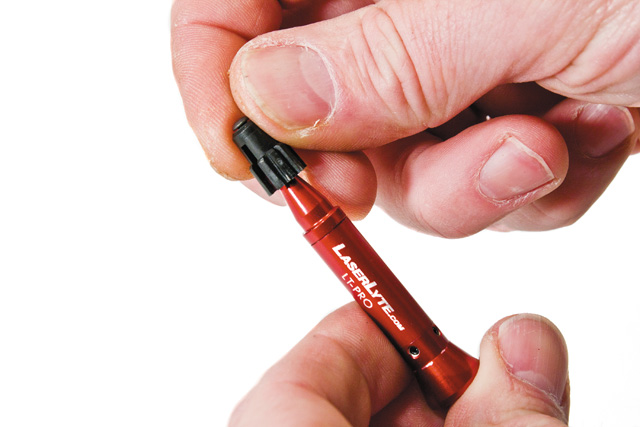
My 11-year-old son has been shooting since he was four. He understands sight alignment and trigger control and has proven it on the range and in the woods with rifles. Last year he started getting serious about handguns, too. My wife, also became more interested in being able to provide her own protection and security for our kids. They both seemed perfect research specimens.
Using 12x18-inch Birchwood Casey Dirty Bird Shadow targets—basically miniature B-27 silhouette targets with a well defined, red center—I had them both fire three, five-shot groups at three different targets using live ammo. The distance was 7 yards and the goal was to establish their average group sizes at that distance, using open sights. My son used a CZ 75 in 9 mm and my wife used a Smith & Wesson 1911, also in 9 mm. For the next five days, they were required to trigger five, five-shot groups on the LaserLyte Laser Training Target using the same handgun and a laser training device. The boy used Laser Ammo's SureStrike Laser Training Bullet and the wife used LaserLyte's Laser Training System.
My wife works days and enjoyed being able to practice without recoil or loud noise, especially at night after the kids were in bed. After the dictated practice regime, both she and my son worked with their handgunsbeyond the mandated 25 trigger pulls. My son went so far as to conduct his own test, shooting from various positions like he was some sort of covert commando. They both enjoyed the exercise and a critical part of the enjoyment was the feedback from the Laser Training Target.
After five days of dry-fire with the laser trainers, both stepped back out to the range. They fired three more five-shot groups with live ammo, using the same handguns and open sights. My son's average group size shrunk by about an inch or 12 percent. My wife's average group size shrank 44 percent! Ironically, their initial average group sizes were identical.
Getting beat brought out the man-determination in my boy. He demanded another try. After another week of more serious practice using the same 25 trigger-pulls-per-day routine, he was able to reduce his groups to an average size of 5.08 inches; a 31 percent decrease. He was still upset about his mom out-shooting him, but found some comfort in the fact he was faster.
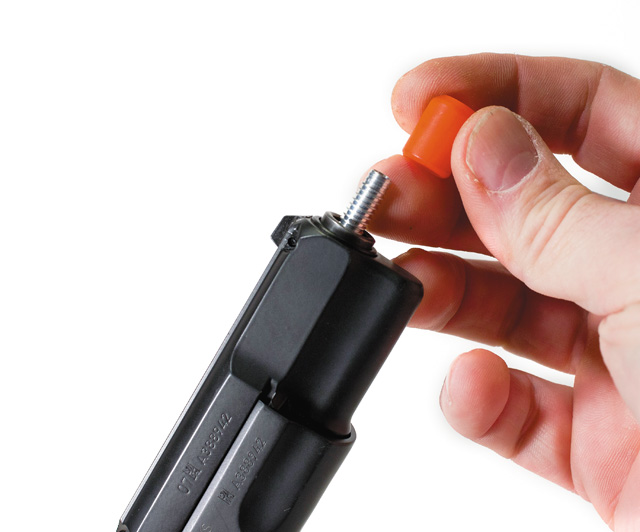
Based on these results, there's no question laser training devices helped improve their basic skills. Honestly, I hadn't expected as much improvement in my wife's or son's shooting, but that just shows what dedicated practice can produce. I really liked using the laser trainers to practice instinctive or point shooting from the holster at close range, and I'm confident they've helped me improve my weak-hand shooting. However, to keep the experiment free of bias, I did not attempt to score my progress.
A LaserLyte Laser Training Target and one of the laser trainers tested will set you back about $300. That's about the same as 1,000 rounds of practice ammunition. The difference; there's no trips to the range; you can practice almost anywhere, at almost any time; and you can shoot as much as you want. All without noise, recoil and muzzle blast that can distract shooters from concentrating on trigger manipulation and sight alignment focus. Batteries are the only upkeep.
This experiment reminds me of something Grandpa used to say to us kids, "If you don't know how to shoot, there's no use buying ammunition 'cause you're just gonna waste it." A laser training device can help you learn to shoot, learn the basics of trigger pull and sight alignment and even help develop self-defense skills without wasting a single round of ammo. I'm convinced they can help new shooters shoot better. They're also a great way to get through a bad-weather weekend or kill time while your in-laws are visiting.
To learn more about the best laser training products currently available, click here.
SAFETY NOTE: Any time you're dry-firing or laser training with a real handgun, do so with an unloaded firearm in an area from which all live ammunition has been removed. And, always follow firearms safety guidelines.












